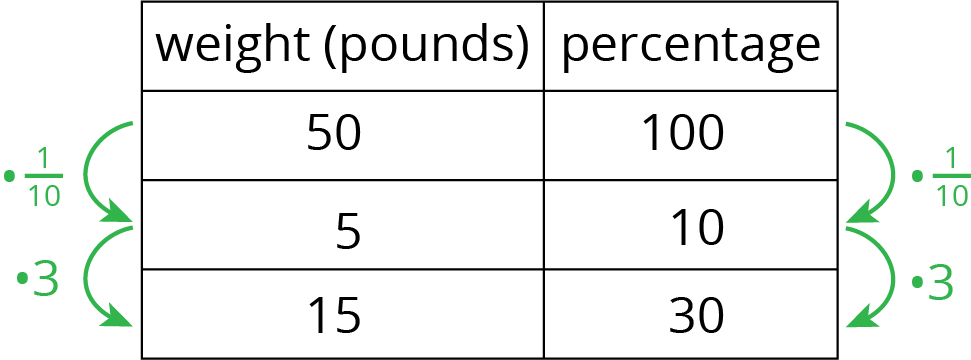We can use a double number line to solve problems about percentages. For example, what is 30% of 50 pounds? We can draw a double number line like this:
We divide the distance between 0% and 100% and that between 0 and 50 pounds into ten equal parts. We label the tick marks on the top line by counting by 5s (50 \div 10 = 5) and on the bottom line counting by 10% (100 \div 10 =10). We can then see that 30% of 50 pounds is 15 pounds.
We can also use a table to solve this problem.
Suppose we know that 140% of an amount is $28. What is 100% of that amount? Let’s use a double number line to find out.

We divide the distance between 0% and 140% and that between $0 and $28 into fourteen equal intervals. We label the tick marks on the top line by counting by 2s and on the bottom line counting by 10%. We would then see that 100% is $20.
Or we can use a table as shown.






